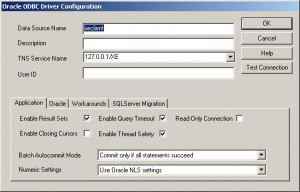During Oracle installation on a windows machine that is configured to use DHCP in order to obtain its IP address, the Following message will probably be displayed:
Checking Network Configuration requirements …
Check complete. The overall result of this check is: Failed <<<<
Problem: The install has detected that the primary IP address of the system is DHCP-assigned.
Recommendation: Oracle supports installations on systems with DHCP-assigned IP addresses; However, before you can do this, you must configure the Microsoft LoopBack Adapter to be the primary network adapter on the system. See the Installation Guide for more details on installing the software on systems configured with DHCP.
As the error message say, this due to the fact that you are trying to install Oracle on a machine that is using DHCP to obtain its IP address. You can still install oracle on a machine without a constant IP address. All you need to do is configure the LoopBack adapter:
Install the Loopback adapter
1) Go to the control panel and choose add hardware
2) The Add Hardware wizard will be displayed, click Next
3) Choose “Yes, I have already connected the hardware” and click Next
4) An hardware list will be displayed. Navigate to the bottom of the list and choose “Add new hardware device”
5) Choose Install the hardware that I manually select from a list (Advance)”
6) Choose “Network adapter”
7) Choose “Microsoft” on the left side of the window and “Microsoft Loopback Adapter” on the right window”
8) Click Next and verify that Microsoft Loopback Adapter is about to install and click next again and finish.
Configure the loop back adapter
1) Go to control panel – network connections, you will see a new network connection.
2) Choose “local area connection 2” (the name may vary but basically it is the one we just added) and click properties.
3) Click on tcp/ip and then properties.
4) Enter an IP address and a subnet mask (you can use 1.1.1.2 and subnet 255.255.255.0)
Go to network connection and click on Advanced settings under the Advanced menu and verify that the loopback adapter is in the first one. (Update: it look like this step is optional because it seems to work in most cases anyway)
Now you can continue your oracle installation.


